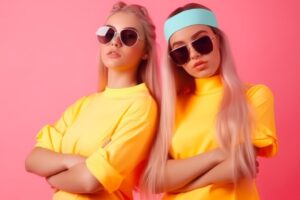In a significant development within the fashion retail landscape, ASOS, the renowned British fashion and cosmetic retailer, has made headlines by announcing its decision to close its Outlet department. This decision, which has been a topic of much discussion, marks a strategic shift within the brand’s business model and raises questions about the future direction of ASOS in the ever-evolving fashion industry.
The Announcement
The news of ASOS closing its Outlet department was first reported by Fashion Network1, with several other industry-leading publications like Apparel Resources2, Drapers Online3, and Fashion United4 also covering the story. This move has been in consideration for some time, and it aligns with ASOS’s ongoing strategy to improve its market positioning.
Reasons Behind the Decision
While ASOS has been a dominant player in the online fashion retail sector, the decision to close the Outlet department is driven by several strategic considerations:
- Focus on Core Business: ASOS intends to sharpen its focus on its core business, which primarily includes the latest season’s fashion and cosmetics. By closing the Outlet department, ASOS can allocate more resources and attention to its core product offerings5.
- Brand Image: ASOS aims to enhance its brand image by concentrating on premium and strategic third-party brands. Closing the Outlet department, which often housed non-strategic brands, is part of the brand’s effort to streamline its product portfolio5.
- Market Competition: The fashion industry has witnessed intense competition, particularly in the online retail space. ASOS’s decision to close the Outlet department could be seen as a strategic response to this competition, as it seeks to position itself as a more exclusive and high-end fashion destination5.
- Consumer Behavior: Changing consumer behavior and preferences have also influenced this decision. Shoppers today are more inclined toward purchasing current-season fashion items, making the Outlet department less relevant to the evolving market demands5.
Impact on ASOS
While the closure of the Outlet department is a significant move for ASOS, it is crucial to assess the potential impacts:
- Enhanced Brand Value: ASOS’s renewed focus on premium brands and current-season products could enhance its brand value and image as a leading fashion retailer5.
- Improved Profit Margins: By reducing the overheads associated with the Outlet department, ASOS may improve its profit margins, which is a positive sign for investors and stakeholders5.
- Competitive Edge: The strategic realignment positions ASOS to better compete with other high-end fashion retailers, which could result in a larger market share5.
- Customer Experience: ASOS will likely invest in enhancing the overall customer experience, which could include improvements in website design, user interface, and customer service5.
Conclusion
ASOS’s decision to close its Outlet department is a strategic move aimed at realigning its business for the future. By focusing on its core strengths and adapting to changing market dynamics, ASOS aims to strengthen its position in the fashion industry. As this transition unfolds, fashion enthusiasts and industry analysts will be closely watching ASOS to see how this strategic shift impacts the brand’s growth and market presence.



















